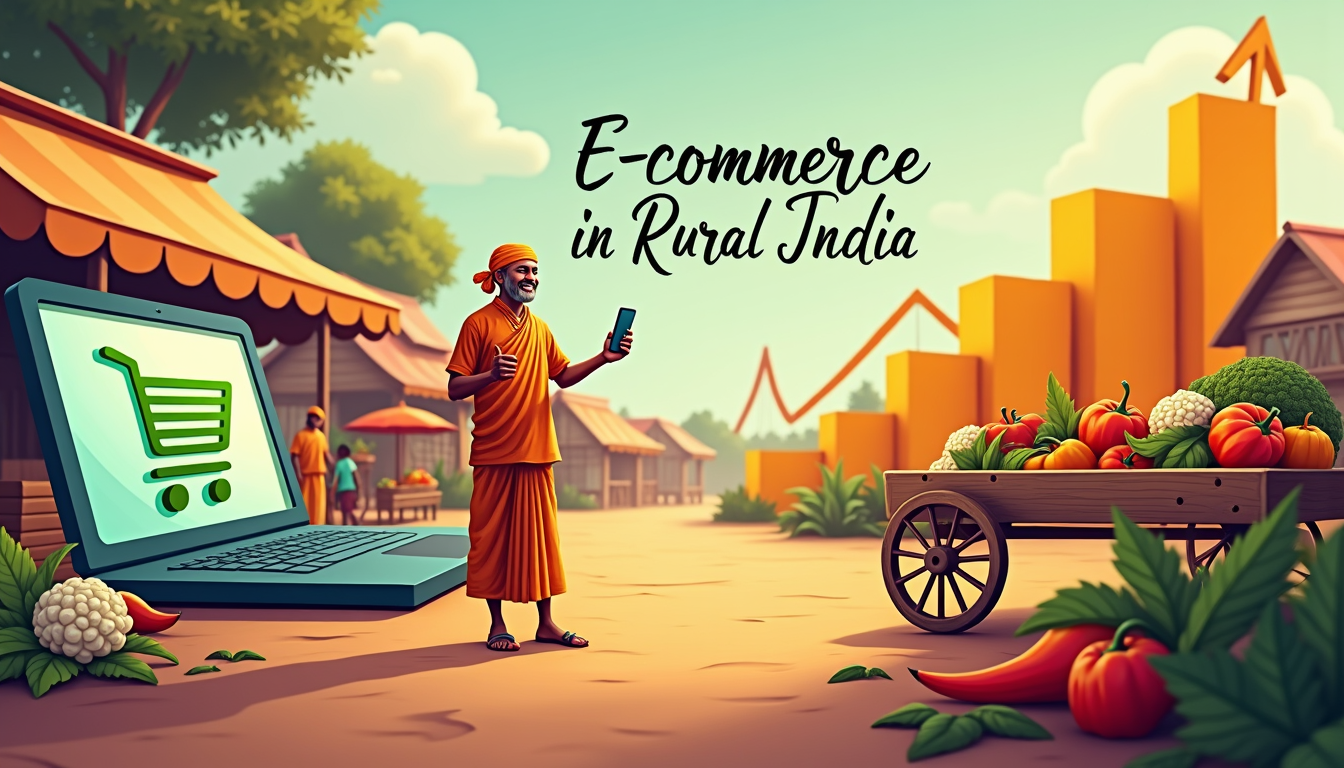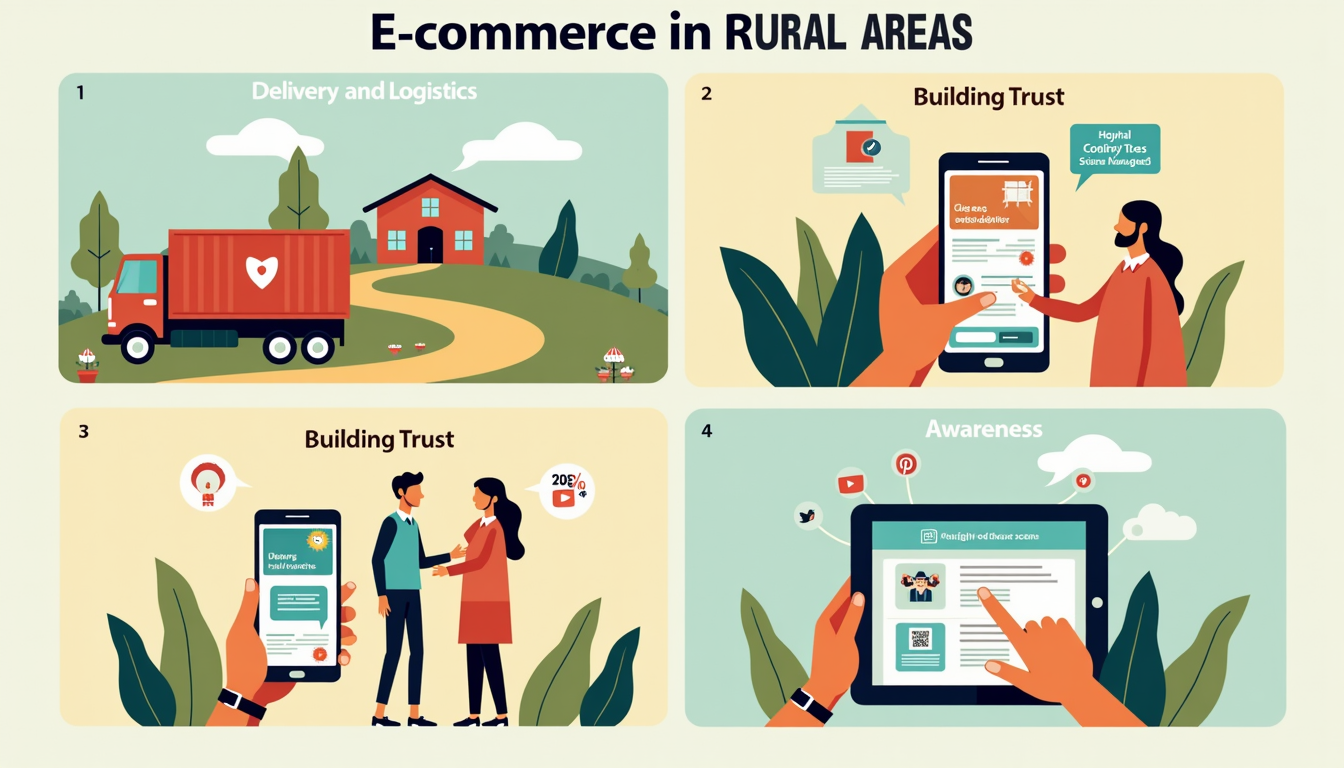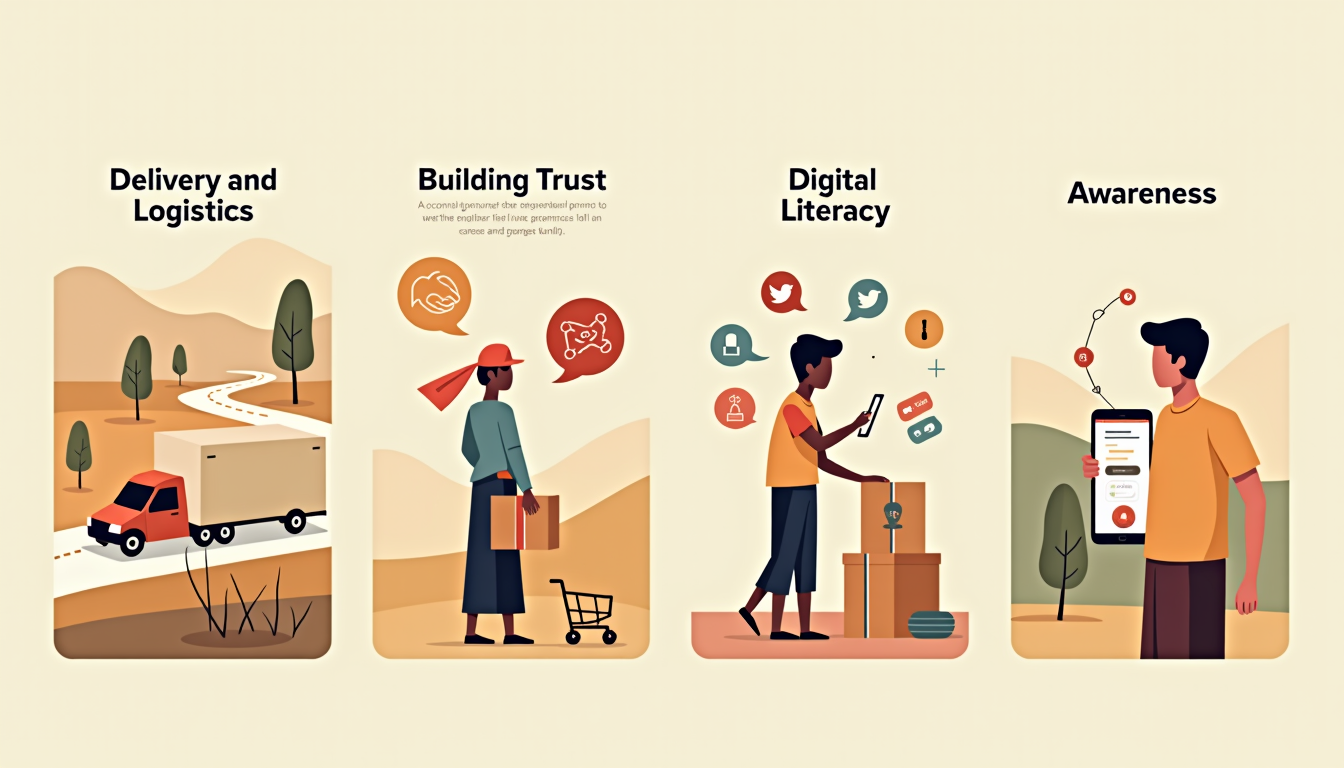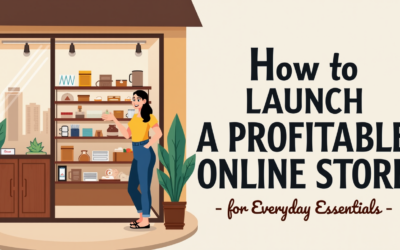
E-commerce in Rural India: Unlocking Growth Opportunities
Introduction
In India, e-commerce is no longer just for big cities. Rural areas are becoming a huge market for online shopping, offering untapped potential for growth. More people are using mobile phones and the internet. This gives businesses a chance to sell their products and services to a larger audience.
This blog will explain how e-commerce is growing in rural India, the challenges businesses face, and how they can succeed. Whether you’re a small business or a big company, rural markets offer exciting opportunities for growth.
Why Rural India Is Important for E-commerce
More than 65% of India’s population lives in rural areas. This means rural markets are a huge opportunity for businesses that want to grow. With affordable mobile devices and increasing internet connections, more rural people are shopping online.
Key Opportunities
- More Internet Users: The number of rural internet users is growing fast. In fact, rural areas now account for nearly half of India’s internet users.
- Changing Shopping Habits: People in rural India are shifting to online shopping for convenience and better deals.
- Cultural Preferences: Products that match local culture or needs are in high demand.
- Government Support: Programs like Digital India and BharatNet are helping more people in villages get access to the internet.

Challenges of E-commerce in Rural Areas
While rural markets are full of potential, businesses face some challenges when trying to sell online in these areas.
1. Delivery and Logistics
- Problem: Roads and transport systems in rural areas are not always good, making deliveries difficult and expensive.
- Solution: Partner with local courier services or use India Post, which has a strong rural network.
2. Building Trust
- Problem: Many rural customers worry about the quality of online products and may not trust digital payments.
- Solution: Offer cash-on-delivery options, clear return policies, and responsive customer service to build trust.
3. Digital Literacy
- Problem: Many rural people are first-time internet users and may find it hard to use online stores.
- Solution: Make websites and mobile apps simple to use and offer support in regional languages.
4. Awareness
- Problem: Some rural customers don’t know much about e-commerce or its benefits.
- Solution: Use social media channels to educate potential customers about online shopping.
How Businesses Can Succeed in Rural Markets
To succeed in rural e-commerce, businesses need to adapt to the specific needs of rural customers. Here are some strategies:
1. Use Regional Languages
- People in rural areas are more comfortable using their local language.
- Tip: Create vernacular websites and mobile apps in Hindi, Tamil, Bengali, or other regional languages.
2. Focus on Affordable Products
- Rural customers look for value-for-money deals.
- Tip: Offer budget-friendly products, discounts, or bundle deals to attract price-conscious shoppers.
3. Mobile-Friendly Websites
- Most rural shoppers use mobile devices to browse the internet.
- Tip: Make sure your online store works smoothly on smartphones, even with slow internet connections.
4. Use Social Media
- Platforms like WhatsApp and Facebook are popular in rural areas.
- Tip: Share product videos, testimonials, and special offers on social media accounts to connect with your audience.
5. Partner with Local Influencers
- Rural customers trust local influencers or community leaders.
- Tip: Collaborate with local influencers to promote your product or service.

Trends Shaping Rural E-commerce Growth
Several trends are driving the growth of e-commerce in rural India. Businesses should keep these in mind to stay ahead:
- Social Commerce:Social media platforms are not just for chatting anymore—they’re also becoming marketplaces. Businesses can use them to promote and sell directly to customers.
- Affordable Internet:Cheaper internet plans are helping more rural people shop online. Companies like JioMart have taken advantage of this trend to expand their reach.
- Hyperlocal Products:Products that match local tastes and traditions are popular in rural markets. For example, regional snacks or traditional clothing sell well.
- Digital Payments:Cash-on-delivery is still popular, but rural customers are beginning to use UPI and other digital payment methods.
Success Stories of Rural E-commerce
Some businesses have already achieved great success in rural markets. Here are a few examples:
- Meesho: This platform allows small businesses to sell directly to their customers using WhatsApp and Facebook. It’s especially popular in rural areas.
- DeHaat: DeHaat connects farmers with agricultural tools, seeds, and services, making it easier for them to access what they need.
- Amazon Saheli: This program helps rural women entrepreneurs sell their products online, giving them a global platform.

Simple Tips for Small Businesses
If you want to grow your e-commerce business in rural India, here are some easy tips to get started:
- Understand Your Audience: Learn about what your rural customers want and need. Conduct market research to understand their habits and preferences.
- Keep It Simple: Make your website easy to use, especially for people who are not tech-savvy.
- Build Trust: Offer cash-on-delivery options and have a strong refund policy to make customers feel secure.
- Focus on Social Media: Use platforms like Facebook and Instagram to share offers and collect customer reviews.
- Invest in Customer Service: Respond to customer questions quickly and provide clear answers to their concerns.
Conclusion
E-commerce in rural India offers businesses a huge opportunity to grow. By addressing challenges like logistics and trust, and focusing on affordable and localized solutions, you can succeed in this fast-growing market.
If you sell local products, make sure your website works well on mobile devices. Use social media to promote your brand. Now is the time to take action. Build your online store and connect with millions of new customers.













